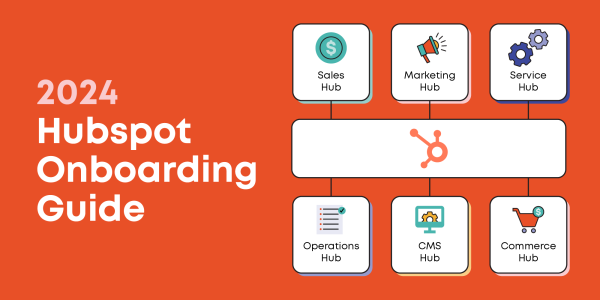4 Trends That Winning Companies Have Adopted During COVID-19
Oct 16, 2020

If we had to pick one slogan for 2020, it would be the phrase, “in these unprecedented times.” The uncertainty of the COVID-19 pandemic, the polarizing political environment, and communities in distress have changed to our interactions with one another and altered generations of human behavior.
As businesses enter their year-end holiday season and new-year forecasting, we thought it would be helpful to identify 4 trends that we’ve observed working with our clients this year. While some companies are experiencing painful disruption or destruction of their existing business model, many are taking notes of these trends and pivoting accordingly.
Here are the big trends we have seen play out in multiple segments.
- Shifting fast to e-commerce.
According to consumer research firm MFour, COVID has driven 10 years e-commerce of growth in 6 months. Being forced out of transactions in a physical environment to e-commerce has driven innovation and investment into digital ecommerce for most businesses, not just retail. The ability to deliver and transact online has become the preferred option for consumers, and organizations are being forced to comply to user demands.
Reuters reported that Nike sold roughly 63% of their total online inventory in the month of July, compared with only 10% a year earlier. Following the basic laws of supply and demand, because demand rose, the price of Air Max shoes also rose 10%.
If you haven’t moved your product delivery model to e-commerce, or implemented an electronic payment system, now is the time to begin the transition to digital.
- Moving as close to the end-user as possible.
The second trend we’ve observed is really a by-product of the e-commerce shift. Brands that have traditionally sold through a distribution channel or third party have had to consider how to allow consumers direct access to accelerate sales.
In many cases, this has meant a direct-to-consumer (DTC) e-commerce experience to capture consumer demand. In other cases, key middlemen were bypassed, and a greater focus was placed reaching the end-user. A great example of this is Bromic Heating, which traditionally marketed to architects and designers for placement of their outdoor heaters in large scale projects. During COVID-19, we pivoted marketing from architects and designers and instead directed efforts to the homeowner. This one small pivot accelerated demand through channel partner e-commerce platforms and increased overall sales 400%. As larger hospitality projects are coming back to construction, we’ve been able to capture accelerated demand from both the end-user homeowner audience, as well as architects and designers.
- Accelerating promotions and sales to capture revenue now.
The uncertainty of the future is more precarious now than in most years, leaving businesses with questions they cannot answer, and futures they cannot predict. Will COVID-19 force a complete shut down the entire economy again? Will political changes create a tougher economic scenario? With so much on the line, brands are being opportunistic and creating urgency to drive sales. For example, retailers are not waiting until the traditional holiday shopping season to run promotions. Target has created a massive sale that aligns with Amazon Prime Day, effectively moving revenue from the Black Friday to mid October.
Are there ways to accelerate revenue for your business now instead of waiting for the election results, Black Friday or year-end? Consider offering incentives for early renewal of contracts or bumping up the schedule for holiday promotions by several weeks.
- Needing dynamic thinking and decisive execution.
Organizations that quickly observe, orient, decide and act (the OODA Loop) have a significantly greater chance of surviving and thriving.
I was on a call with a client this week to determine the tactical marketing plan for the next three months. Our standard process would be to review the previous quarter’s tactics, evaluate the results and reorient activities to match the desired objectives. It was shocking to hear the business leader utter the words “we’ve committed to follow the plan until the end of the year.” Essentially, his sentiment meant, “We’re committed to putting our head down, not adjust, not evaluate. Let’s follow the plan set 9-months ago before we knew about COVID and keep going. No adjustment required.” This is a leadership miss that will result in missed opportunities.
How quickly your organization dynamically adapts and aligns people, process and resources to achieve competitive advantage has bigger implications in these unprecedented times than ever before.
There are numerous examples of how innovations and adaptations to standard user-behavior has enabled businesses to thrive. Curbside pickup, contactless delivery, street closures for outdoor dining and early shopping hours for the elderly all illustrate the importance of dynamic, OODA Loop, thinking.
The key factor in how successful companies were in this shift was the ability of leadership teams to recognize the changes in the environment and effectively lead their teams through transitions. As you consider your business take a few minutes to think about the questions presented here and what impact they might have for your organization.
Additional Questions for Reflection:
- What innovation has your organization implemented in the last 6 months? What have you learned about your business?
- How often does your team pause to observe, orient, decide and act on what you’ve learned (what we would also call a learning loop)? Do you have a defined cadence to your learning loops?
- What promotional tactics or product adaptations should you consider for November and December?
4 Trends That Winning Companies Have Adopted During COVID-19 by ![]() Paul Bresenden in CEO Coaching
Paul Bresenden in CEO Coaching









Leave A Comment